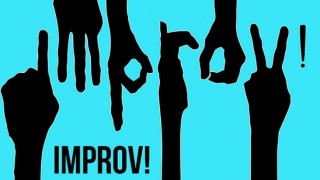It will take you one minute to read this so why not do it right now?

Feeling overwhelmed by the busyness of the season or paralyzed by a long “to do” list? Can’t get started on that big project, or haven’t written your 2017 plan? Can’t find the time to read all of the books, articles, emails, and other information you want to know?
Stop what you are doing to take a minute, or five or ten, to set a small goal and get it done, right now!
There is one surefire way to pull yourself out of frustration and procrastination and it’s to quit thinking and start doing – in very small steps. These brief moments of action will force you to make quick and small progress, triggering a sense of accomplishment, reducing the size of that list in your head and training yourself to get things done throughout the day. Some examples:
- Do one or two things that each take just a few minutes to accomplish at your desk at the start of each day, then tackle the big stuff. A few important calls, one brief key conversation, send a thank-you note, read a favorite blogger, schedule a future important meeting.
- Quit talking about all of that holiday shopping you haven’t done yet, pull out your smartphone and order one gift on your list. A few minutes of this daily and your shopping is done!
- Instead of trying to find a full day to clean out your garage, kitchen, closet, etc. take less than 30 minutes and tackle one drawer or section. You will create a habit of mini projects and the repeated small progress over time will keep you organized.
- No time to read that book or newspaper? Subscribe to one of many summary services available.
- Summaries.com. Eight-page executive summaries from the latest business books.
- Nextdraft.com. Quick, entertaining look at the day’s best news stories from Dave Pell.
- Farnamstreetblog.com. Sunday’s Brain Food newsletter for increasing your knowledge.
- Need a rest or mental break? Set 10 minutes on your smartphone clock for a power nap or to sit quietly to recharge. Or download the Headspace App on your smartphone and start taking 10 minutes anywhere/anytime for a guided meditation that will positively change your brain and your day.
- Take a few moments and make a list of needs and goals as a start to the process of writing your 2017 plan – for yourself, your family or your business. Start small and you will develop good habits for writing down plans which is the first step to successful execution and achieving amazing goals. Even better, take a minute and call us because we have the folks on board that can help you write and rock your plan!
And now that you have taken a minute to read this, set a small goal! Stop what you are doing to order that gift, write a thank-you note, sign-up for a summary service, clean out that one desk drawer, or pick up the phone and make that one important phone call.
So set a small goal and get started. It takes just a minute.

 While Marketing and Improvisation seem like two classes that would never intertwine; believe it or not, I have found the similarities between the two are very prominent in the business arena. Improvisational techniques used in marketing can change one’s skills for the better.
While Marketing and Improvisation seem like two classes that would never intertwine; believe it or not, I have found the similarities between the two are very prominent in the business arena. Improvisational techniques used in marketing can change one’s skills for the better.




